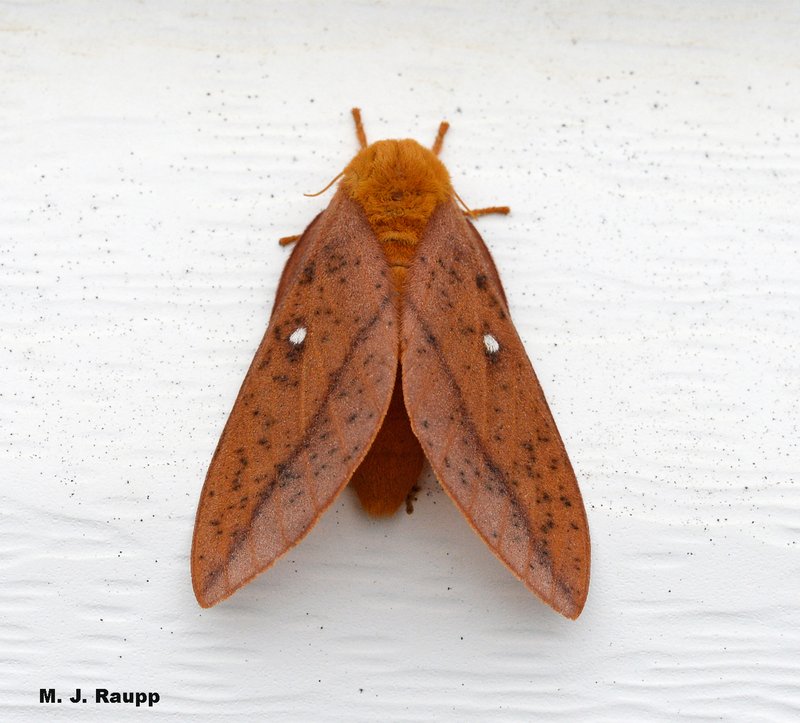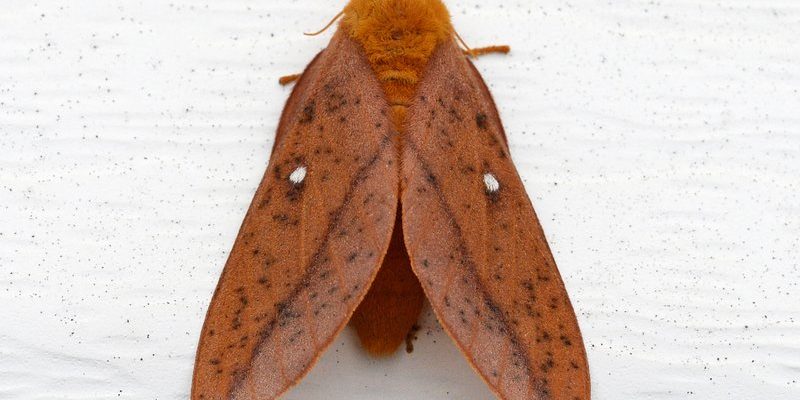
Have you ever spotted a peculiar moth fluttering by and wondered what it was? Meet the Oakworm Moth, a fascinating little creature that calls oak trees its home. This moth isn’t just any garden-variety flutterer; it’s part of a unique ecosystem, playing its role in nature’s intricate web. These moths have a charming appearance, but there’s much more to them than meets the eye.
Imagine a tiny, delicate creature with wings that resemble the leaves of the oak tree—it blends in effortlessly. The Oakworm Moth is skilled at camouflage, making it tough for predators to spot. The story of this moth encompasses its life cycle, habitat, and even its role in agriculture. So, let’s dive deeper to understand what makes the Oakworm Moth truly special.
Physical Characteristics
Oakworm Moths have distinct physical features that make them stand out in the insect world. Typically, their wingspan ranges from 1.5 to 2 inches, showcasing a blend of browns and greens that mimic the bark and foliage around them. Their fuzzy bodies are equipped with fine scales that shimmer when caught in sunlight, adding to their enchanting appearance. As nocturnal insects, they are primarily active at night, which adds to their mysterious charm.
One striking trait is their ability to blend into their surroundings. The Oakworm Moth’s coloration serves as an effective defense mechanism against predators. When resting on the bark of an oak tree, they are nearly invisible. This camouflage is a survival tactic that has evolved over time, allowing them to thrive in their native habitats.
While the Oakworm Moth may look delicate, they are resilient creatures. Their lifecycle consists of several stages, starting from an egg laid on oak leaves to caterpillars feasting on foliage. Understanding these physical traits gives us insight into how they adapt and survive in the wild.
Life Cycle of the Oakworm Moth
The life cycle of the Oakworm Moth is a remarkable journey that unfolds in several stages. It starts when the female moth lays her eggs on the underside of oak leaves. These eggs are tiny and somewhat inconspicuous, making them easy to overlook. After a few days, the eggs hatch into larvae, commonly known as caterpillars. This is where the story of the Oakworm Moth gets interesting.
As the caterpillars emerge, they begin to munch on the oak leaves, which is crucial for their growth. You might see clusters of these green and brown caterpillars, often camouflaged among the leaves they feed on. They undergo several molts, growing larger with each phase until they reach maturity. This feeding frenzy can sometimes lead to noticeable damage to oak trees, which is why they can be a concern for some gardeners.
Once fully grown, the caterpillars find a safe spot to pupate. This stage is transformative; they spin a silk cocoon, where they’ll undergo metamorphosis. After a few weeks, they emerge as adult Oakworm Moths. With their wings unfurling and drying in the sun, they are ready to start the cycle anew. This fascinating life cycle illustrates the intricate processes that shape their existence in nature.
Habitat and Distribution
The Oakworm Moth is predominantly found in areas where oak trees thrive. This includes woodlands, oak savannas, and even urban parks with oak trees. They are not picky about their location, as long as they have access to oak foliage for feeding and breeding. This adaptability allows them to inhabit a range of environments across North America.
During the warmer months, you’re likely to spot them fluttering around oak trees, especially in the evenings. As they are nocturnal, many people don’t realize they’re there until they see them attracted to porch lights or street lamps. Their preference for oak trees ties directly into their diet and lifecycle, as these trees provide not just shelter but also food sources for their caterpillars.
The distribution of the Oakworm Moth can vary significantly based on environmental conditions. They thrive in areas with healthy oak populations, but changes in land use, such as deforestation or urban development, can impact their habitats. Understanding where they live helps us appreciate their role in the ecosystem and the importance of preserving their natural environments.
Diet and Feeding Habits
When it comes to dining, the Oakworm Moth and its caterpillars have a particular taste—oak leaves. The caterpillars are voracious eaters, devouring the leaves of various oak species. Their feeding habits can create a noticeable impact on the trees, especially in areas with large populations of these caterpillars. While this may sound alarming, oak trees are generally resilient and can often recover from caterpillar feeding.
Interestingly, the diet of the Oakworm Moth varies slightly depending on the specific species of oak available. Some caterpillars prefer the leaves of white oaks, while others may favor red oaks. This dietary preference plays a crucial role in their survival and reproductive success, as a healthy food source allows them to thrive and produce healthy offspring.
As adults, Oakworm Moths do not feed. They rely on the energy stored during their caterpillar stage to sustain them. Instead of searching for food, they focus on mating and laying eggs to continue the lifecycle. This trait is common among many moth species, emphasizing the importance of the caterpillar stage in their overall survival strategy.
Ecological Role
The Oakworm Moth plays a significant ecological role in their environment. As a herbivore, the caterpillars contribute to the natural process of plant consumption, which can help foster new growth in oak trees. By feeding on the leaves, they stimulate the trees to produce new foliage, which is beneficial for the overall health of forest ecosystems.
Moreover, Oakworm Moths serve as a food source for various predators, including birds and small mammals. Their presence in the food chain highlights their importance in supporting biodiversity. Without them, many species that rely on these moths as a food source would struggle to find adequate nourishment.
Furthermore, their existence contributes to the pollination of flowers and plants. As the adult moths move from tree to tree, they can unintentionally assist in the transfer of pollen, supporting the growth of different plants. This interconnectedness showcases how each creature, no matter how small, plays a vital role in maintaining ecological balance.
Conservation Status
While the Oakworm Moth is not currently listed as endangered, changes in their habitat can impact their populations. Urban development, pesticide use, and deforestation pose threats to their survival. These factors can disrupt the delicate balance of their ecosystems, affecting not only the Oakworm Moth but also the plants and animals that rely on a healthy environment.
Conservation efforts often focus on protecting natural habitats and promoting sustainable land use practices. By preserving oak forests and reducing pesticide use, we can help maintain the populations of Oakworm Moths and the intricate ecosystems they inhabit. The health of these moths is a good indicator of the overall health of their environments.
Education also plays a crucial role in conservation. By raising awareness about the importance of moths like the Oakworm Moth, we can foster appreciation for these creatures and encourage efforts to protect them. After all, every small step towards conservation can lead to significant changes in the health of our planet.
Interesting Facts
- Oakworm Moths are nocturnal, making them primarily active at night.
- Their camouflage is so effective that they can be almost invisible when resting on tree bark.
- Oakworm Moth caterpillars can cause noticeable damage to oak trees when present in large populations.
- They undergo a complete metamorphosis, changing from egg to caterpillar to pupa, and finally to moth.
- Adult Oakworm Moths do not eat, relying on energy stored from their caterpillar stage.
FAQ
Are Oakworm Moths harmful to oak trees?
Oakworm Moths can cause some damage to oak trees, especially when their caterpillar populations are high. The caterpillars feed on the leaves, which can lead to defoliation in severe cases. However, oak trees are generally resilient and can recover from such damage, especially if it occurs later in the season when they have already set new growth.
What do Oakworm Moths look like?
Oakworm Moths have a distinct appearance, with a wingspan of 1.5 to 2 inches. Their wings are usually a mix of browns and greens, which helps them blend into their surroundings. The fuzzy bodies of these moths are adorned with fine scales that can shimmer in the light, making them enchanting to observe.
How long do Oakworm Moths live?
The lifespan of an Oakworm Moth typically ranges from a few weeks to a couple of months, depending on environmental conditions. Adults emerge from their cocoons, mate, and focus on laying eggs before their life cycle ends. The overall lifespan can be influenced by factors such as temperature and food availability during their caterpillar stage.
Where can I find Oakworm Moths?
Oakworm Moths are commonly found in areas with oak trees, such as woodlands, savannas, and even suburban areas with oak foliage. They are primarily active at night, making them more challenging to spot during the day. If you’re curious to see them, look for them around porch lights in the evening or inspect oak trees during the warmer months.
Do Oakworm Moths have any predators?
Yes, Oakworm Moths face various predators, including birds, bats, and small mammals. Their ability to camouflage helps them avoid being easily spotted, but they are still vulnerable to these natural threats. Predation is a part of their life cycle, contributing to ecological balance in their habitats.
Can Oakworm Moths be beneficial to gardens?
While the caterpillars can cause damage to oak trees, Oakworm Moths themselves can play a beneficial role in the ecosystem. They serve as food for various predators and help with the pollination of plants as adult moths. In a balanced ecosystem, their presence contributes to the overall health of the environment.
How do Oakworm Moths survive winter?
Oakworm Moths survive winter in their pupal stage, hidden within cocoons. This state of dormancy allows them to withstand cold temperatures until the warmer months arrive. Once conditions improve, they emerge as adult moths, ready to continue their life cycle. This adaptation ensures their survival despite seasonal changes.
Are there different species of Oakworm Moths?
Yes, there are several species of Oakworm Moths, each adapted to specific types of oak trees and environments. These species can vary in size, coloration, and behavior, but they generally share similar life cycles and diets. Understanding these differences adds to the richness of the Oakworm Moth’s narrative in nature.
What do Oakworm Moths do during the day?
During the day, Oakworm Moths are typically inactive and rest on the bark of trees or other surfaces. Their camouflage helps them avoid detection by predators. They conserve energy and wait for evening to become active when they search for mates and lay eggs. This nocturnal lifestyle is part of what protects them in their natural environments.
How can I help protect Oakworm Moths?
To help protect Oakworm Moths, consider sustainable gardening practices. Avoid using pesticides that can harm beneficial insects and plant native oak trees to support their habitat. Educating others about the importance of these moths and their roles in the ecosystem can also foster appreciation and conservation efforts.
Why are Oakworm Moths important to the ecosystem?
Oakworm Moths play a crucial role in nature by acting as both herbivores and as a food source for predators. This balance is essential for maintaining biodiversity. Their feeding habits can even stimulate new growth in oak trees, contributing to the health of their environment. Recognizing their place in the ecosystem highlights the interconnectedness of all living things.

